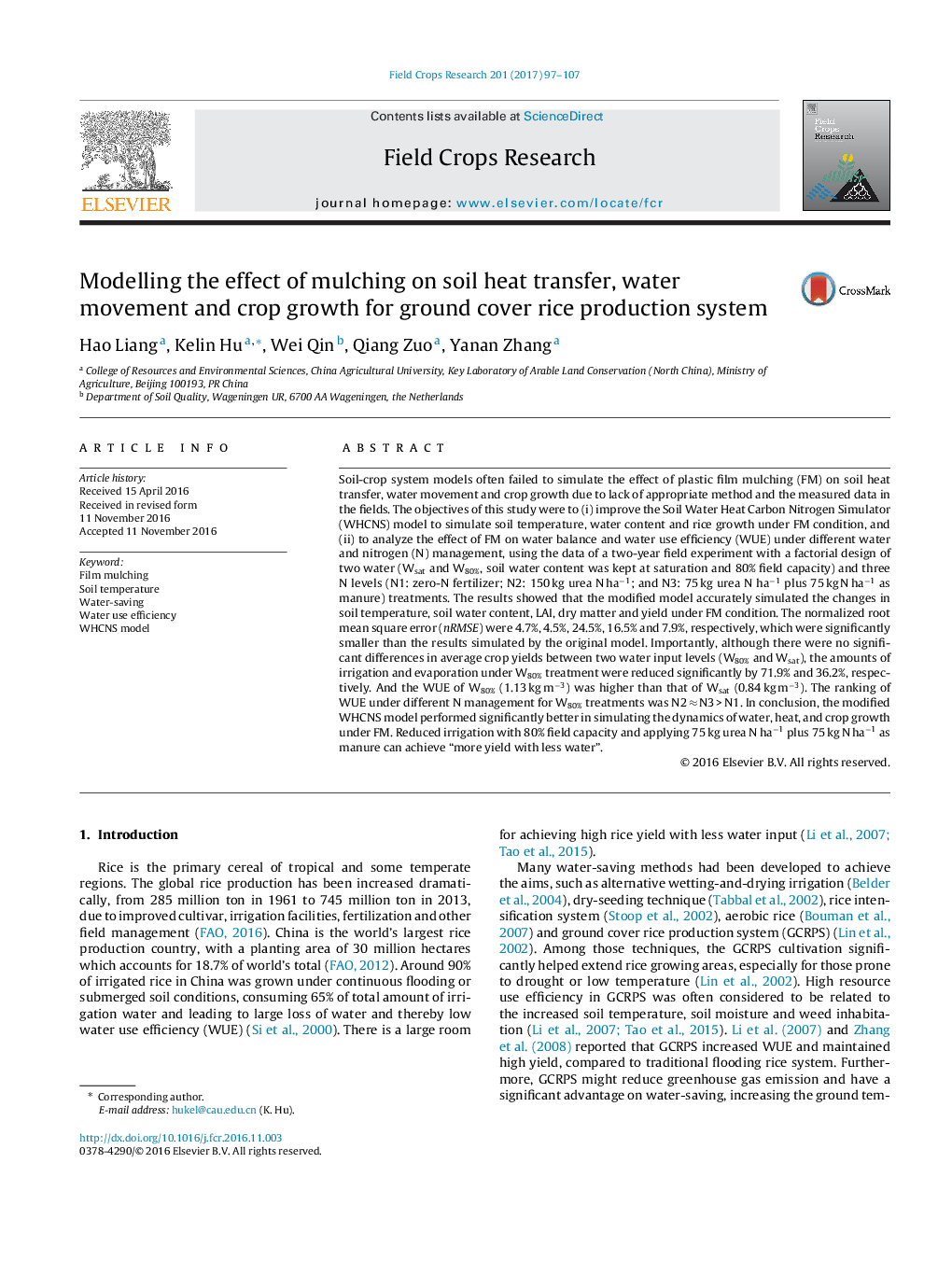| کد مقاله | کد نشریه | سال انتشار | مقاله انگلیسی | نسخه تمام متن |
|---|---|---|---|---|
| 6374336 | 1624662 | 2017 | 11 صفحه PDF | دانلود رایگان |
عنوان انگلیسی مقاله ISI
Modelling the effect of mulching on soil heat transfer, water movement and crop growth for ground cover rice production system
ترجمه فارسی عنوان
مدل سازی اثر مالچ بر روی انتقال حرارت خاک، حرکت آب و رشد محصول برای سیستم تولید برنج تحت پوشش زمین
دانلود مقاله + سفارش ترجمه
دانلود مقاله ISI انگلیسی
رایگان برای ایرانیان
کلمات کلیدی
موضوعات مرتبط
علوم زیستی و بیوفناوری
علوم کشاورزی و بیولوژیک
علوم زراعت و اصلاح نباتات
چکیده انگلیسی
Soil-crop system models often failed to simulate the effect of plastic film mulching (FM) on soil heat transfer, water movement and crop growth due to lack of appropriate method and the measured data in the fields. The objectives of this study were to (i) improve the Soil Water Heat Carbon Nitrogen Simulator (WHCNS) model to simulate soil temperature, water content and rice growth under FM condition, and (ii) to analyze the effect of FM on water balance and water use efficiency (WUE) under different water and nitrogen (N) management, using the data of a two-year field experiment with a factorial design of two water (Wsat and W80%, soil water content was kept at saturation and 80% field capacity) and three N levels (N1: zero-N fertilizer; N2: 150 kg urea N haâ1; and N3: 75 kg urea N haâ1 plus 75 kg N haâ1 as manure) treatments. The results showed that the modified model accurately simulated the changes in soil temperature, soil water content, LAI, dry matter and yield under FM condition. The normalized root mean square error (nRMSE) were 4.7%, 4.5%, 24.5%, 16.5% and 7.9%, respectively, which were significantly smaller than the results simulated by the original model. Importantly, although there were no significant differences in average crop yields between two water input levels (W80% and Wsat), the amounts of irrigation and evaporation under W80% treatment were reduced significantly by 71.9% and 36.2%, respectively. And the WUE of W80% (1.13 kg mâ3) was higher than that of Wsat (0.84 kg mâ3). The ranking of WUE under different N management for W80% treatments was N2 â N3 > N1. In conclusion, the modified WHCNS model performed significantly better in simulating the dynamics of water, heat, and crop growth under FM. Reduced irrigation with 80% field capacity and applying 75 kg urea N haâ1 plus 75 kg N haâ1 as manure can achieve “more yield with less water”.
ناشر
Database: Elsevier - ScienceDirect (ساینس دایرکت)
Journal: Field Crops Research - Volume 201, 1 February 2017, Pages 97-107
Journal: Field Crops Research - Volume 201, 1 February 2017, Pages 97-107
نویسندگان
Hao Liang, Kelin Hu, Wei Qin, Qiang Zuo, Yanan Zhang,
